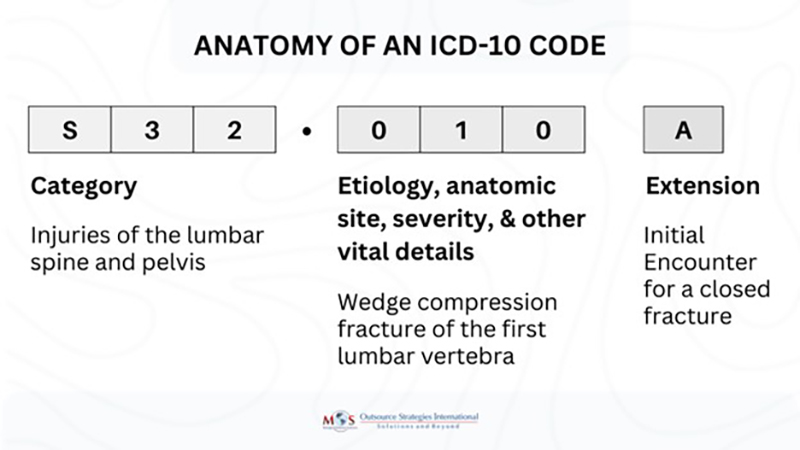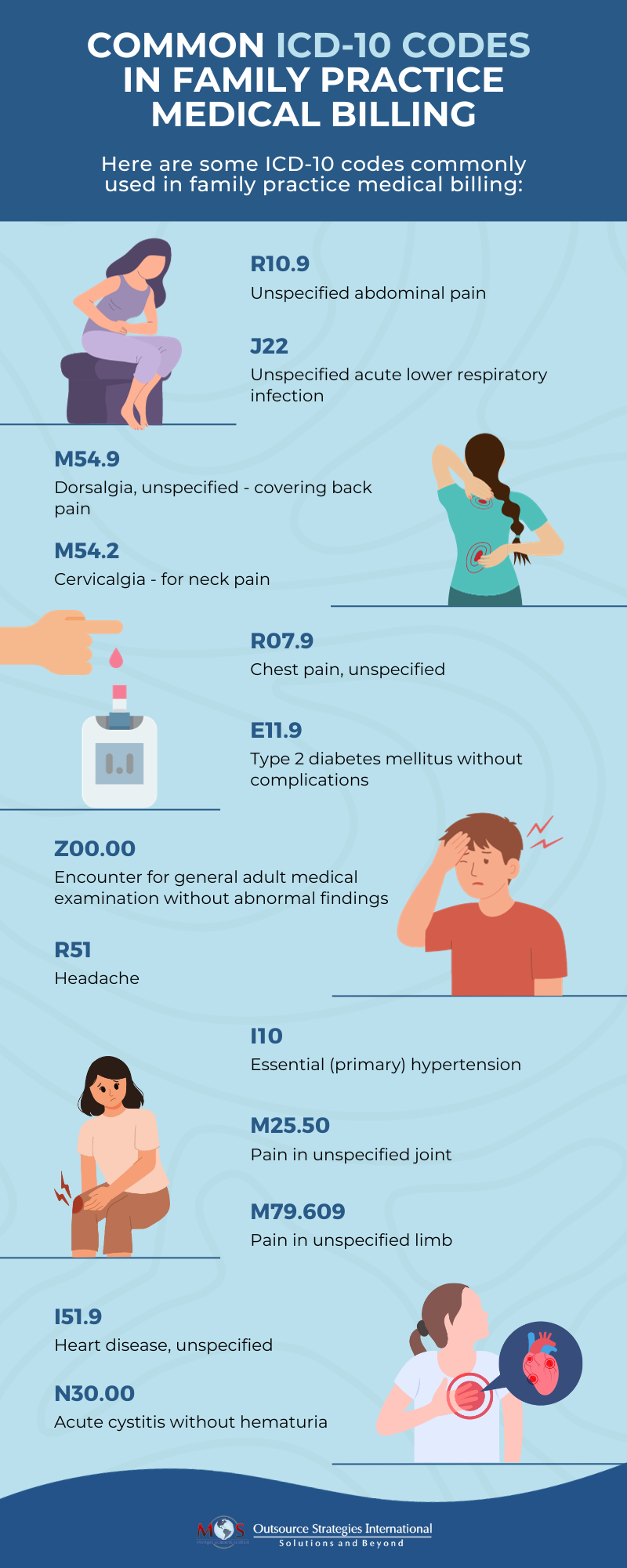ICD-10 is the primary standard for classifying standard medical diagnoses. ICD-10 codes represent health conditions, diseases, abnormal findings, signs, symptoms, injuries, external causes of illnesses, and social factors. Healthcare professionals, medical coders, insurance companies, public health organizations, researchers, and policymakers utilize ICD-10 codes to classify and track various health conditions and diseases.
ICD-10 codes are alphanumeric and may seem complex, but are fundamental to understanding and conveying information about diagnoses and treatments. Healthcare providers need to submit ICD-10 codes to insurance companies to get reimbursed for their services. Adhering to medical billing codes and standards is easier when you have expert support.
In this blog post, we take a look at ICD-10 codes-what they are, why they matter, and the importance of precise documentation to ensure code specificity.


Ensure accurate, efficient coding that optimizes reimbursement and streamline your workflow!
Contact (800) 670-2809 Today!
ICD-10 Code Structure Explained
Each ICD-10 code consists of letters and numbers, providing comprehensive information about a documented diagnosis or procedure. ICD-10 codes have from three to seven characters. Every code starts with a letter, followed by a number, and then more letters or numbers. The first three characters describe the illness or condition. If the code is longer than three digits, it will have a decimal point after the third character.
In general, the longer an ICD-10 code is, the more detailed and specific the diagnosis or description of the condition. Shorter codes provide broader classifications, while longer codes offer more precise information about the nature, location, severity, cause, or other specific details related to the diagnosis or condition.
Here are some examples that show how ICD-10 codes are structured:
P09 – Abnormal findings on neonatal screening
K26.1 Acute duodenal ulcer with perforation
A37.81 Whooping cough due to other Bordetella species with pneumonia
O9A.211 Injury, poisoning and certain other consequences of external causes complicating pregnancy, first trimester
M1A.0111 Lead-induced chronic gout, right shoulder, without tophus (tophi)
S32.010A Wedge compression fracture of first lumbar vertebra, initial encounter for closed fracture
Understanding ICD-10 codes means understanding how they are structured. Let’s break down the components of the ICD-10 code “S32.010A”:
S: The first character signifies the category of injury, and in this case, “S” relates to injuries involving the spine and spinal cord.
32: The second and third characters provide more specific details within the category. In this code, it refers to the lumbar region of the spine.
Characters 4-6 (numeric or letter) provide more details like etiology, anatomic site, severity, or other clinical details. “010” in this code refers to a wedge compression fracture of the first lumbar vertebra.
A: The seventh character, if present, signifies the type of encounter ((“initial encounter”, “subsequent encounter”, and “sequela”). In this code, “A” signifies the initial encounter for a closed fracture.

In summary, “S32.010A” represents a specific type of injury: a wedge compression fracture of the first lumbar vertebra that has occurred for the first time and is classified as a closed fracture.
Here are some ICD-10 codes commonly used in family practice medical billing:
General Guidelines for ICD-10 Coding
Ensure complete documentation
Complete and consistent medical documentation is crucial,” states CMS. To ensure accurate code assignment, document conditions comprehensively based on your clinical knowledge. Recognize and document pertinent clinical details affecting code specificity. In cases of insufficient information, opt for signs/symptoms or unspecified codes for an accurate portrayal of the healthcare encounter.
Code to the highest level of specificity
Diagnosis codes reflect patient health status and aid in continuous care. Accurate representation via specific codes is vital for quality care and to establish medical necessity for treatments, procedures, or interventions. Using unspecified codes is recommended only when more specific codes are not available.
Stay updated
Use ICD-10 codes for inpatient discharges and outpatient encounters within the current financial year (October 1 to September 30). Reliable coders keep abreast of the latest changes on the CMS website and refer to the latest coding resources to ensure accurate code assignment.
Physician-coder communication
Coding involves teamwork. Providers should communicate with coders for precise documentation, code assignment, and reporting. When documentation lacks clarity, coders must initiate physician queries for accuracy.
Expert Support can Make a Difference
ICD-10 codes pose challenges due to their complexity and need for specificity. Its extensive classification covers diverse medical conditions, resulting in a substantial amount of unique codes. Accurately capturing and documenting specific diagnoses or conditions by selecting the most detailed codes possible requires a deep understanding of the various codes available and their nuances. Various dimensions like etiology and anatomical site contribute to this complexity. Codes vary extensively-for pregnancy, they differ by trimester, complications, and outcomes. Chronic diseases like hypertension detail multiple aspects, expanding complexity by encompassing related health issues.
Physicians can rely on companies providing medical coding and medical billing services to assign the most specific codes for the diagnosis and treatment. Precise ICD-10 coding enhances care and boosts reimbursement.


Optimize patient care and maximize reimbursement with our medical coding and billing services!









